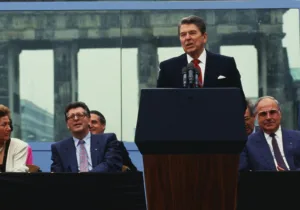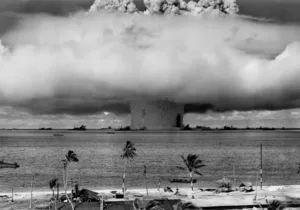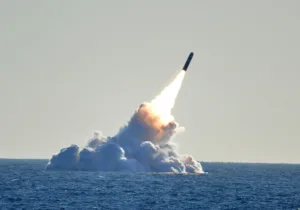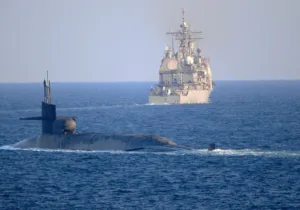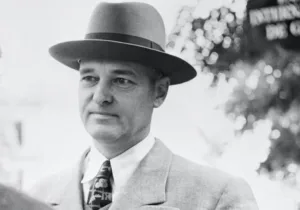President Ronald Reagan despised mutually assured destruction – the doctrine that if the Soviets attacked the United States with a nuclear weapon the United States would retaliate with nuclear weapons. The fear of nuclear retaliation would then dissuade the Soviets from employing nuclear weapons and maintain deterrence. That was the basic formula Reagan inherited, yet in practice the efforts to maintain credible deterrence in the minds of the Soviets was more complicated than that.
Reagan affirmed the previous administration’s approach toward the strategy of nuclear deterrence, which was characterized as counterforce, as opposed to countervalue. The United States would seek to deter the Soviet Union from attacking the United States by holding at risk what the Soviets valued most, the infrastructure necessary to perpetuate the communist regime, and would not target the society as such.
President Jimmy Carter’s Single Integrated Operational Plan (SIOP), according to Presidential Directive 59 (PD-59), would provide nuclear targeting options against the Soviet Union and its allies in a variety of contingencies. The targeting plans would be characterized by flexibility and reliance on reserved forces that could bolster and help execute the Carter strategy. PD-59 also went on to outline the categories of the possible targets. These counterforce targets included strategic and theater nuclear weapons and storage; military command, control, communications, and intelligence capabilities; all other military forces including stationary and mobile; and industrial facilities that would sustain the war effort.
At the time Carter’s policy, as with Nixon’s, stoked fears among some that the focus on flexibility, targeting the adversary’s weapons, means of regime control and warfighting meant that the United States was preparing for “nuclear warfighting” and thereby making nuclear war more likely. The preferred alternative to flexible and discriminate targeting was a force that had fewer options and targeted cities so that nuclear war remained maximally horrific. To them, this increased the likelihood that deterrence would hold. But nuclear strategists inside the Pentagon, charged with the responsibility to seek to prevent the Soviets from employing a nuclear weapon, the logic of the critics would undermine rather than strengthen the credibility of deterrence.
If the Soviets did decide to launch a nuclear weapon, American strategists determined that potential US responses would seek to retaliate in such a way as to convince the Soviets to stop escalation and end the conflict with the lowest levels of destruction possible. Would the Soviets necessarily respond to US retaliation with more nuclear escalation? Possibly, but the US had an obligation to prepare to end the conflict and for that the President would need a spectrum of options. Having fewer nuclear response options that did not hold at risk what the adversary valued, including his ability to carry out his military and political objectives, risked maintaining a nuclear force that was not credible in the minds of the Soviets and therefore had an unacceptable degree of risk that deterrence would fail. Threatening the Soviets with societal destruction was not credible; it was also immoral.
President Ronald Reagan embraced the Nixon and Carter paradigms to calibrate a force and policy that would optimize the success of US deterrence, cementing American deterrence and establishing what strategists have accurately labeled the “canonical categories” that provide the United States with what it has long believed at necessary to maximize the potential success of American deterrence options.
Although Reagan embraced the canonical categories and maintained the non-targeting of cities policy, he also famously sought to bolster some aspects of the strategic posture – notably, improving active defenses to reduce “the likelihood of coercion and increased prospects for postwar recovery of the United States.” This was one of Reagan’s greatest contributions to statecraft and strategic thought: not only was it immoral to target cities as such, but in Reagan’s mind it was immoral to intentionally permit American cities to remain vulnerable when we had the ability as a nation to better protect them. To strengthen the credibility of US deterrence, the United States should not only seek to advance its offensive forces, but also invest in the technologies to blunt a Soviet attack and shield the American people.
The Strategic Defense Initiative (SDI) speech, which Reagan delivered 40 years ago on March 23rd, 1983, articulated an American defense program, but it also added to, rather than undermined, the bipartisan US nuclear deterrence policy that had evolved since WWII. Yet beyond that, when President George W. Bush withdrew the United States from the Anti-Ballistic Missile (ABM) Treaty in 2003, he opened the door to building on Reagan’s ideas and the technologies that had only been developed (and then shelved) since SDI.
Today, the United States has limited missile defense architecture. Our existing defenses are designed to protect the American people, allies and deployed forces from shorter-range missile threats and rogue states like North Korea. But there is no longer a treaty that prohibits the United States from investing in technologies to expand missile defense closer to the more robust vision Reagan had in mind. Commercial technologies have developed, the cost of space launch has significantly decreased, and the threat from two major nuclear powers—China and Russia— looms.
There is no silver bullet to guarantee the protection of the American people. But increasing the credibility of deterrence and thereby improving America’s ability to protect its civilian population points to the wisdom of Ronald Reagan and the moral and strategic assumptions he so eloquently articulated in his SDI speech.

